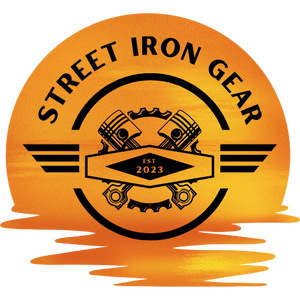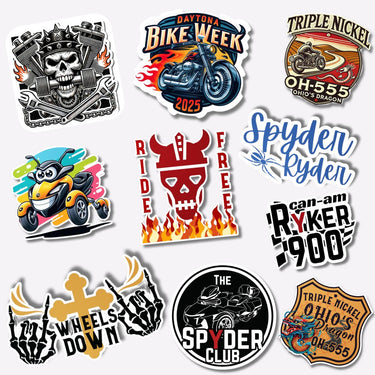Suspension upgrades. The phrase itself might make some riders either cringe or cheer. Some think it's best left to pros with high-tech tools and perfect calibration skills. Others see it as an essential DIY project to improve their bike's handling and comfort. If you fall somewhere between those extremes—like I do—you probably just want a straightforward guide to help you figure out how to improve your ride without reinventing the wheel. Let’s talk about upgrading your motorcycle’s suspension: what you need to know, what’s worth upgrading, and why your back might thank you later.
Now, I know what you're thinking. "Do I really need to mess with my suspension?" Well, that depends. If your idea of comfort is a vibrating butt after a day of potholes, then no, maybe you don't. But if you'd like a smoother ride and better control—especially when you're cruising on twisty back roads—then keep reading.
Why Upgrade Your Motorcycle's Suspension?
Stock suspension is often built to be "good enough" for the average rider. And by average, I mean someone who probably doesn't weigh what I did after having triplets or who never packs more than a wallet and sunglasses for a ride. Manufacturers typically build suspension to fit certain performance averages and budget limits. That means if you’ve gained a little extra gear, weight, or ride differently than their target customer, your suspension may be lacking.
For me, when I was riding a cruiser or my adventure bike, I thought the suspension was fine—until I hit the steep, twisty hills in southeast Ohio. Between uneven roads and sharp turns, I quickly realized how important a tuned suspension is for both comfort and safety. The right suspension upgrade can drastically improve stability, cornering, and braking, all while reducing fatigue on long rides.
Know Your Suspension Components
Motorcycle suspension generally involves two key components: forks (or shocks) in the front and rear shocks at the back. Think of them as your bike's knees and hips—they absorb the terrain's impact so your body doesn’t have to. If either is out of whack, your ride is going to feel as stiff as your joints after sleeping on a bad mattress. Here's a breakdown of each component and what to consider upgrading:
Front Forks
Front forks are typically equipped with springs and dampers designed to absorb shock and provide stability. However, stock forks often feel either too soft (leading to nose-diving when braking) or too stiff (jarring on rough roads). You can address this by upgrading to adjustable cartridges or better fork springs.
Some riders swear by progressive-rate springs, which adjust stiffness based on the amount of compression. Brands like Ohlins and Racetech offer high-performance options that allow for better adjustability. Installing upgraded fork springs or valves can also improve how your bike handles during cornering—a big plus when you're navigating winding back roads.
Rear Shocks
The rear shock is your bike’s main defense against bumps and ruts. Upgrading to a performance rear shock can be a game-changer, especially if you often carry a passenger or luggage. Look for options that allow for preload, compression, and rebound adjustments—fancy terms for customizing how your bike responds to varying weights and terrain.
Brands like YSS, Progressive Suspension, and Fox Racing offer a wide variety of shocks that cater to different riding styles. If you’re tackling uneven roads like I do on a regular basis, investing in a fully adjustable rear shock will give you a smoother, more stable ride.
Tools and Preparation
Before you start turning wrenches, it's important to gather the right tools and materials. Nothing ruins a Saturday afternoon like realizing you’re missing a socket wrench halfway through disassembling your forks. Here are some essentials you'll need:
- Motorcycle jack or stand (don’t skimp here—your bike is heavy)
- Torque wrench (you want those bolts tightened correctly)
- Socket and Allen wrench set
- Suspension fluid (check your bike’s manual for specifications)
- Zip ties (for holding brake lines or other components temporarily)
If you're unsure about fluid levels or torque specifications, refer to your bike's service manual. YouTube tutorials can also help, but always prioritize reliable sources over "that guy" who somehow missed key safety steps. We’ve all been there.
Should You Do It Yourself or Call a Pro?
This is where a little self-awareness comes in. Are you comfortable disassembling part of your motorcycle without needing a support group? If so, you’ll likely save money doing a suspension upgrade yourself. However, keep in mind that some adjustments—like setting sag (the suspension’s resting compression with your weight on it)—require precise measurements and tools.
If math and calibration aren’t your strengths (they certainly aren’t mine after years of chasing triplet boys around), it might be worth paying a professional for fine-tuning. Local shops or suspension specialists can provide custom setups that match your weight, riding style, and terrain.
Dialing in the Right Settings
Upgrading the suspension is only half the battle. Once installed, you’ll need to adjust settings to optimize performance. Focus on these key areas:
- Sag: The amount your suspension compresses under your weight. Ideally, this should be around 25-35% of total suspension travel.
- Compression: Controls how quickly the suspension absorbs bumps. Too much and your bike feels stiff; too little and it’s like riding a pogo stick.
- Rebound: Dictates how fast the suspension returns to normal after compression. You don’t want it rebounding too quickly or too slowly—find a balance.
Dialing in these settings can take some trial and error, but once you find the sweet spot, you’ll wonder why you didn’t upgrade sooner.
Real-World Benefits
I noticed a huge difference after upgrading my suspension on previous bikes. For one, I no longer felt like I was wrestling a stubborn bronco every time I hit a series of rough backroads. The bike tracked smoother through curves and absorbed potholes with ease. Plus, I was far less fatigued after longer rides. Even my husband, who’s been riding for over 40 years, noticed how much better the ride felt.
The right suspension setup lets you ride with confidence, knowing your bike can handle whatever the road throws at it. For day-trippers like us, that peace of mind makes all the difference in how much enjoyment you get from the ride.
Final Thoughts
Upgrading your motorcycle’s suspension might not be the flashiest project, but it’s one of the most impactful. A well-tuned suspension improves handling, comfort, and safety—three things every rider needs. Whether you choose to tackle it yourself or enlist the help of a pro, your knees and back will thank you. So, gear up, take the time to customize your settings, and enjoy a smoother, more stable ride.
Shameless Plug
Transform your space with our 'Abstract Sketch Motorcycle in European City' framed canvas wall art, a stunning piece that merges the thrill of biking with urban elegance. This huge biker canvas wall decor, featuring an abstract motorcycle design, is the perfect gift for motorcycle lovers and a striking addition to any collection of motorcycle art prints. Let your personality be reflected on the artwork adorning your walls.
European City Motorcycle Abstract Sketch Canvas Print











